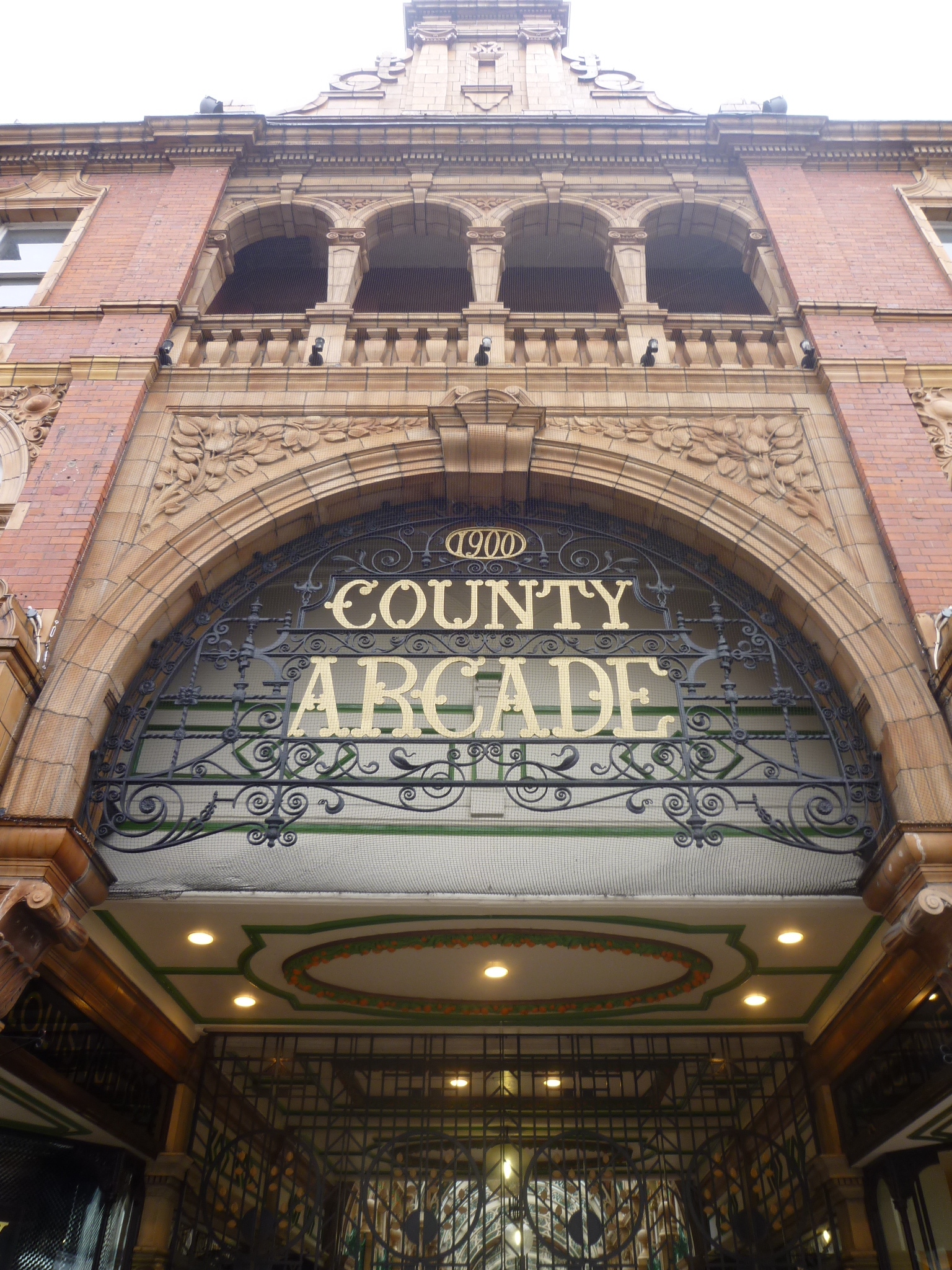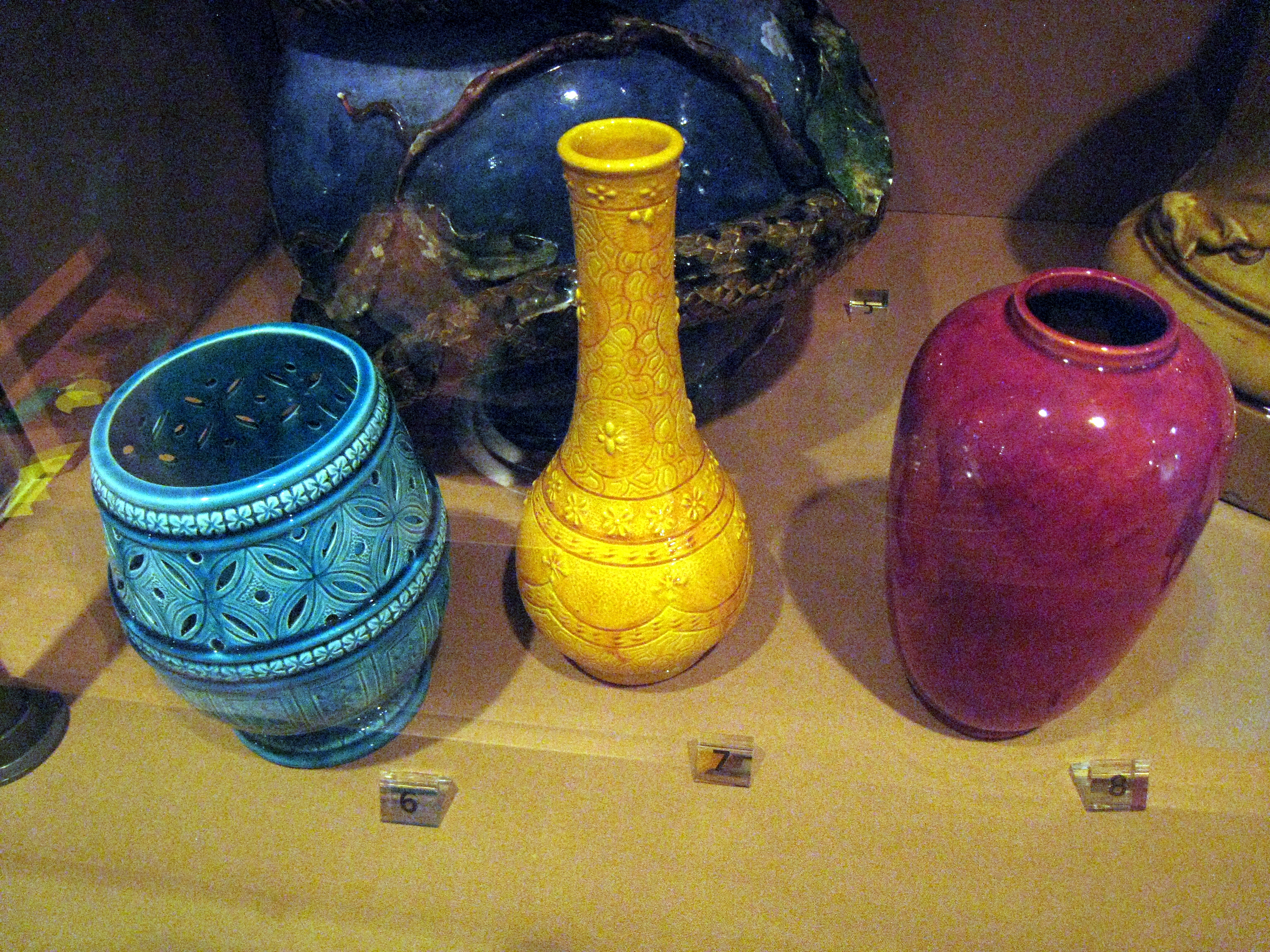Burmantofts Pottery in Leeds became the major producer of tiles and architectural ceramics in Yorkshire. The company originated in 1842 when William Wilcock and John Lassey started their colliery. After encountering a seam of fireclay, they started to produce pipes and chimney pots. Lassey died in 1858, leaving his share of the business to his widow. Five years later she sold her share to John Holroyd, and the business became Wilcock & Company.
The company opened an office on Infirmary Street in Leeds in 1875, two years before Wilcock’s death. Holroyd’s son James joined the company, and expanded its range of products to include decorative bricks and tiles, glazed bricks and art pottery in about 1879. The company published its first catalogue in 1882, and its products were soon in demand.
Leeds in particular has many buildings decorated with Burmantofts terracotta and faience, including Alfred Waterhouse’s Great Hall for the Yorkshire College of 1883, Matcham’sEnglish theatre architect and designer, responsible for the design and construction of more than ninety theatres and the redesign and refurbishment of a further eighty throughout the United Kingdom. County and Cross Arcades, the Grand ArcadeFour Victorian shopping arcades built between 1878 and 1904, all listed buildings and still in use. and many public houses.
History
In 1842 William Wilcock and John Lassey started Rock Colliery in Burmantofts in East Leeds. They founded a company trading as coal proprietors and brick makers on a 100-acre (40 ha) site.[1] A seam of fireclay was encountered at their colliery in 1859 and they started to produce sanitary ware.[2] Lassey’s widow inherited his his share of the company, which she sold to John Holroyd in 1863, and the business became Wilcock & Company.[3] After Wilcock’s death in 1879, Holdroyd’s son, James, took over the management and started to produce faience art pottery, salt-glazed bricks and decorative tiles and bricks in terracotta for interior and exterior use.[2] In 1888 Holdroyd renamed the business the Burmantofts Company, and the following year it became part of the Leeds Fireclay Company when it merged with Ingham & Sons, Joseph Cliff & Sons, Joseph Brooke & Sons of Halifax, and Edward Brooke & Sons of Huddersfield.[1]
Burmantofts employed potters and modellers from other potteries to work at the factory. The main modeller was E.C. Spruce, who dealt with the large architectural pieces; another was William James NeatbyCeramic designer and artist born in Barnsley, Yorkshire, who trained as an architect but changed career and went to work for Burmantofts Pottery. who went on to be head potter at Doultons of Lambeth.[4]
Art pottery production ceased in 1904, and the company concentrated on bricks and architectural commissions. Its architectural faience was used widely into the early 1900s, and in 1908, Burmantofts produced white Marmo faiance as an alternative to terracotta. The works closed in 1957; the site was cleared ten years later and redeveloped for housing.[1][4]
Faiance
James Holroyd was interested in architecture, and the company started to make architectural salt-glazed bricks and decorative tiles for cladding existing and new buildings.[3] The fashion for tiled interiors made Burmantofts faience an in-demand product.[1] The Leeds Fireclay Company, the largest of its type in the country, became the major producer of terracotta facings, a popular alternative to stone because of their resistance to soot and smoke pollution.[2]
Leeds has many other buildings decorated with Burmantofts terracotta and faience, including Alfred Waterhouse’s Great Hall for the Yorkshire College[a]Leeds University of 1883, while the Hyde Park Picture House’s facade from around 1914 incorporates Burmantofts Marmo. Manchester too has many buildings decorated with Burmantofts products, including many trade warehouses on Whitworth Street, the Midland Hotel, the former Police and Fire Station and Manchester University’s Main Building.[4]
Art pottery
The company made art pottery from about 1879, and produced popular items in antique, Gothic revival, Oriental and Anglo-Persian styles. Three main glazes were used for decoration initially: Persian blue, orange yellow and deep red “sang de boeuf”, before more experimental and elaborate colours were introduced. Large vases, pedestal urns, plaques and animal figures were produced, many for export.[5]


